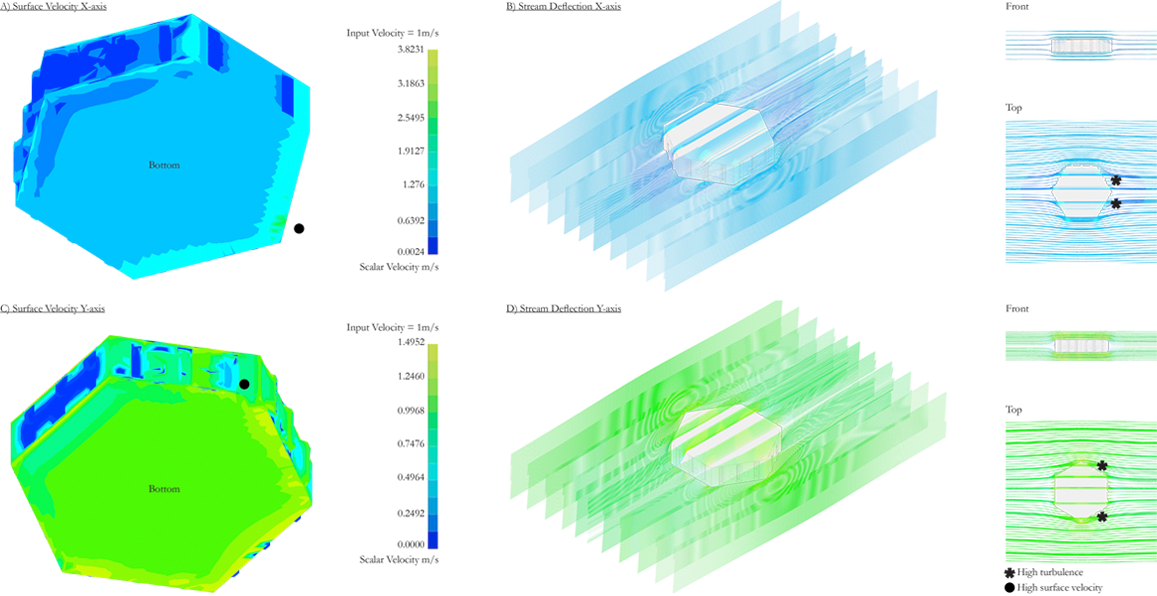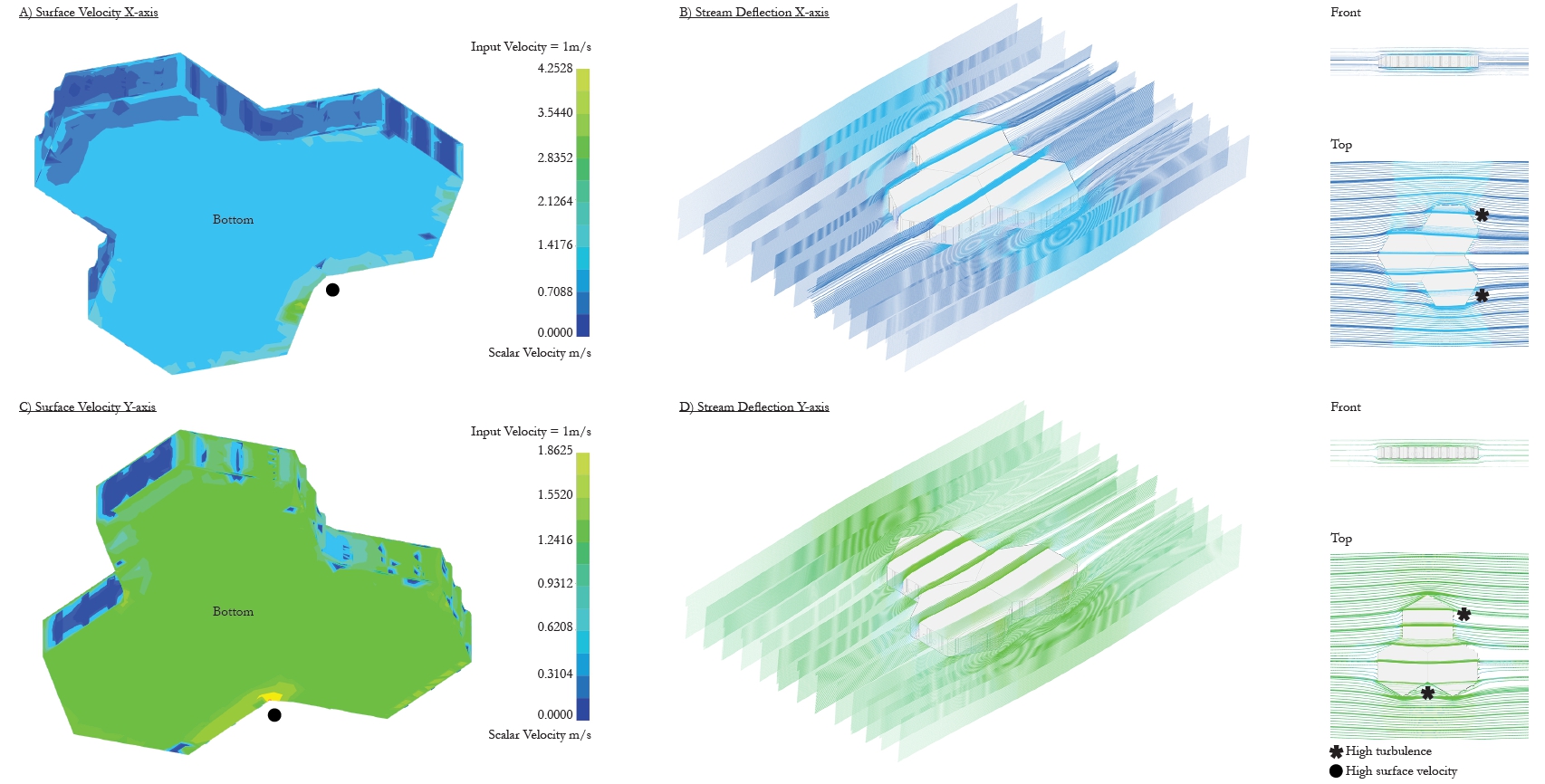Landboxes
System / Structural Performance

Our engineering team uses a combination of fluid simulations, structural strength, and growth scalability to achieve a Landboxes Unit with the best overall performance.
Landboxes Unit form-finding
Form finding is applied to seek the optimum Landboxes Unit to perform in the conditions of uncertainty and variety presented by the sea. A combination between fluid simulations, structural strength, and growth scalability are used to reach to an overall performing Unit. For the fluid simulations Landboxes uses computational fluid dynamics (CFD), which is the process of analyzing fluid flows. In the case of structural strength, Landboxes studies the overall structural integrity of basic shapes. In regards of growth scalability, Landboxes explores the possibilities of scalability and directionality that each shape offers. The result of this analysis leads us to the hexagon shape as the best option.


Why the hexagon?
- It is able to distribute the forces exerted by the sea currents equally along all its sides
- It is the strongest structurally performing shape in every direction where the force is exerted
- It is scalable and extendable in six different directions, defined by its six sides
Individual and aggrupation CFD analysis
The individual CFD analysis provides a general overview of how the dynamics of the sea have an effect on a hexagonal Landboxes surface, as well as the points of turbulence. This is initially measured with two indicators, the surface velocity, and the stream deflection. The setup is an unidirectional analysis for each X and Y axis to consider the changes that occurs in sea currents, with an input velocity of 1m/s. The effects of this analysis increase with the increase in the velocity of the currents.

- The points of increased surface velocity represent areas where the surface of the unit will be prone to more friction, hence exposed to more erosion. To prevent this, there can be a special treatment of that area with an increased volume of material, or with a coating that prevents this.
- The stream deflection gives an insight of areas where more turbulences can occur in the surroundings of the Landboxes Unit, having an effect in external bodies such as attachments to the Landboxes Unit, boats, or potential swimmers around the area. Further improvements in form-finding can prevent this, as well as attachments to the edges of the Unit in touch with water.

CFD analysis: Aggrupation of 3 Units
Since the System is also meant to be used in groups, an aggrupation CFD analysis is a must. In this sense, a set of three Landboxes are used as the input to the program. With this setup, it is observed that the points of most surface velocity and stream deflections change. The most noticeable change is the change in increase in the surface velocity by over 20%.


CFD analysis: perimeter modules
At Landboxes we continue working on the impact of fluids, now focused on the development of additional perimeter modules, which together with a set of units, will reduce impact and erosion. The results will be published in our papers and partially on this website.